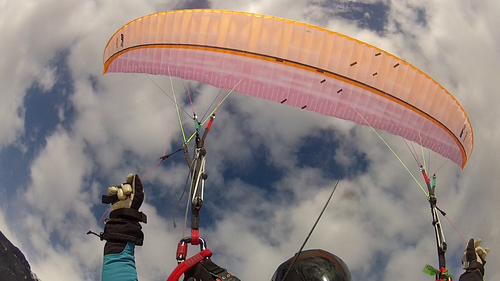UP International Kantega XC2 M |
|||||||||||||||||||||||||||||||||||||||||||||||||||||||||||||||||||||||||||||||||||||||||||||||||||||||||||||||||||||||||||||||||||||||||||||||||


|
|||||||||||||||||||||||||||||||||||||||||||||||||||||||||||||||||||||||||||||||||||||||||||||||||||||||||||||||||||||||||||||||||||||||||||||||||
Instability rating |
|||||||||||||||||||||||||||||||||||||||||||||||||||||||||||||||||||||||||||||||||||||||||||||||||||||||||||||||||||||||||||||||||||||||||||||||||
|
|||||||||||||||||||||||||||||||||||||||||||||||||||||||||||||||||||||||||||||||||||||||||||||||||||||||||||||||||||||||||||||||||||||||||||||||||
Glider characteristics |
|||||||||||||||||||||||||||||||||||||||||||||||||||||||||||||||||||||||||||||||||||||||||||||||||||||||||||||||||||||||||||||||||||||||||||||||||
|
Launch preparations: average
launch characteristics: delayed, delayed climb,needs pronounced guidance, minimal feedback during inflation, no braking required, slows before zenith, tends to stall during control check
asymmetric collapse: canopy colllapses at high angle to leading edge, high dynamics, total course change 180-270°, (3), very fast course change rate, marked forward pitching 60-75°, (4), very high height loss 50-59 m, (4), moderate sink velocity 15-19 m/s, (2), collapse on opposite wingtip with course change >90°, (5), with tendency to cravat, (4), G-Force 3,5- 3,9 G, (4)
Frontal collapse: canopy collapses with low total collapse area, marked pitch backwards 45-60°, moderate pitch forwards 30-45°, moderate dynamics, course change 90-180°, (3), variable recovery behaviour, at times with stable closed frontal collapse, at times with automatic recovery, (4), symmetric recovery, simple pilot action required, (4), horseshoe, wingtips at front, immediate return to normal airspeed, with tendency to cravat, (4), Simple pilot action required to end height loss (4), low sink velocity 10-14 m/s, (1)
Spiral dives: moderate sink velocity increase, Low G-Force 3,0- 3,5 G, (1), Sink velocity after 720° <14 m/s, (1), Moderate maximum sink velocity < 18 m/s, (2), sink velocity increase < 3 m/s on brake release, (1), Course change 90-180° after spiral exit, (1), low height loss during recovery < 30 m, (1)
B-Stall: normal force required, moderate pitch backwards 15-30°, moderate pitch forwards 15-30°, stable sink phase, no tendency to deform, immediate return to normal airspeed, 8-10 m/s, height loss on recovery < 20 m
big ears: simple initiation, stable flight phase, wingtips flatter a little, immediate automatic recovery, Vsink unaccelerated 2,5-3 m/s, Vsink accelerated 3,5-4 m/s, Vunaccelerated 0-3 km/h less than trimspeed, Vaccelerated 5-8 km/h faster than trimspeed
Steering behaviour: dampened to balanced, 60 cm brake travel range, Noticable brake pressure increase, normal stall point, easily identifiable |
|||||||||||||||||||||||||||||||||||||||||||||||||||||||||||||||||||||||||||||||||||||||||||||||||||||||||||||||||||||||||||||||||||||||||||||||||
Notes |
|||||||||||||||||||||||||||||||||||||||||||||||||||||||||||||||||||||||||||||||||||||||||||||||||||||||||||||||||||||||||||||||||||||||||||||||||
|
en: Launch preparations: UP's LTF-B Kantega XC 2 has a set of sheathed lower suspension lines and unsheathed upper gallery lines which again require a close look on sorting. The thin risers are uncomplicated. Launch characteristic: UP's Kantega XC 2 is quite different,and has a tendency to hang behind during launching. With constant guidance the canopy then climbs to the zenith and requires little or no brake to stabilise. Asymmetric inflations are difficult to recover from, and careful brake input during the control phase is required otherwise the canopy may fall back down again. Asymmetric Collapse: UP's Kantega XC 2 has two faces. Collapses at trim speed are unspectacular regarding height loss and rates of course change. When collapsed while accelerated, the glider turns rapidly and dives markedly forward. Again, the dynamics and increased twist danger must be viewed critically for this glider. The glider also demonstrated a repeatable tendency for collapses on the oposite wingtip with cravats. Front collapses: As with asymmetric collapses UP's Kantega XC 2 has two quite different reaction modes: recovery from smaller front stalls is unspectacular, but everything becomes rather more complicated if more than 50% of the wing area is collapsed. The glider then exhibits a marked delayed recovery, at times remaining in a stable front stall, deformation at the canopy middle leads to a front horseshoe with cravat tendencies requiring pilot action to recover from and prevent further height loss. Spiral Dive: Moderate sink velocities, no strong acceleration surges on exiting and rapid recovery to normal flight. B-Stall: No problems with this manoeuvre as long as care was taken during entry. Big Ears: Wingtips flap at speed. |
|||||||||||||||||||||||||||||||||||||||||||||||||||||||||||||||||||||||||||||||||||||||||||||||||||||||||||||||||||||||||||||||||||||||||||||||||
Rating |
|||||||||||||||||||||||||||||||||||||||||||||||||||||||||||||||||||||||||||||||||||||||||||||||||||||||||||||||||||||||||||||||||||||||||||||||||
|
Safety class 5 This class of paraglider reacts very demandingly to one or more of the following manoeuvres: frontal collapse, asymmetric collapse or spiral dive and may present pilots with a particular challenge.Very demandingly means that the above manoeuvres result in highly dynamic reactions from the glider, and/or large height losses. Critical subsequent glider reactions are also to be expected. Expert piloting skills achieved through constant practice, fast personal reaction times and precise pilot inputs are required to be able to immediately react to the above manoeuvres to maintain flight control and prevent large height loss or subsequent critical glider reactions. In particular, pilots should be able to recognise the onset of the above manoeuvres and be able to prevent or minimise their effects through immediate and precise pilot inputs. |
|||||||||||||||||||||||||||||||||||||||||||||||||||||||||||||||||||||||||||||||||||||||||||||||||||||||||||||||||||||||||||||||||||||||||||||||||

